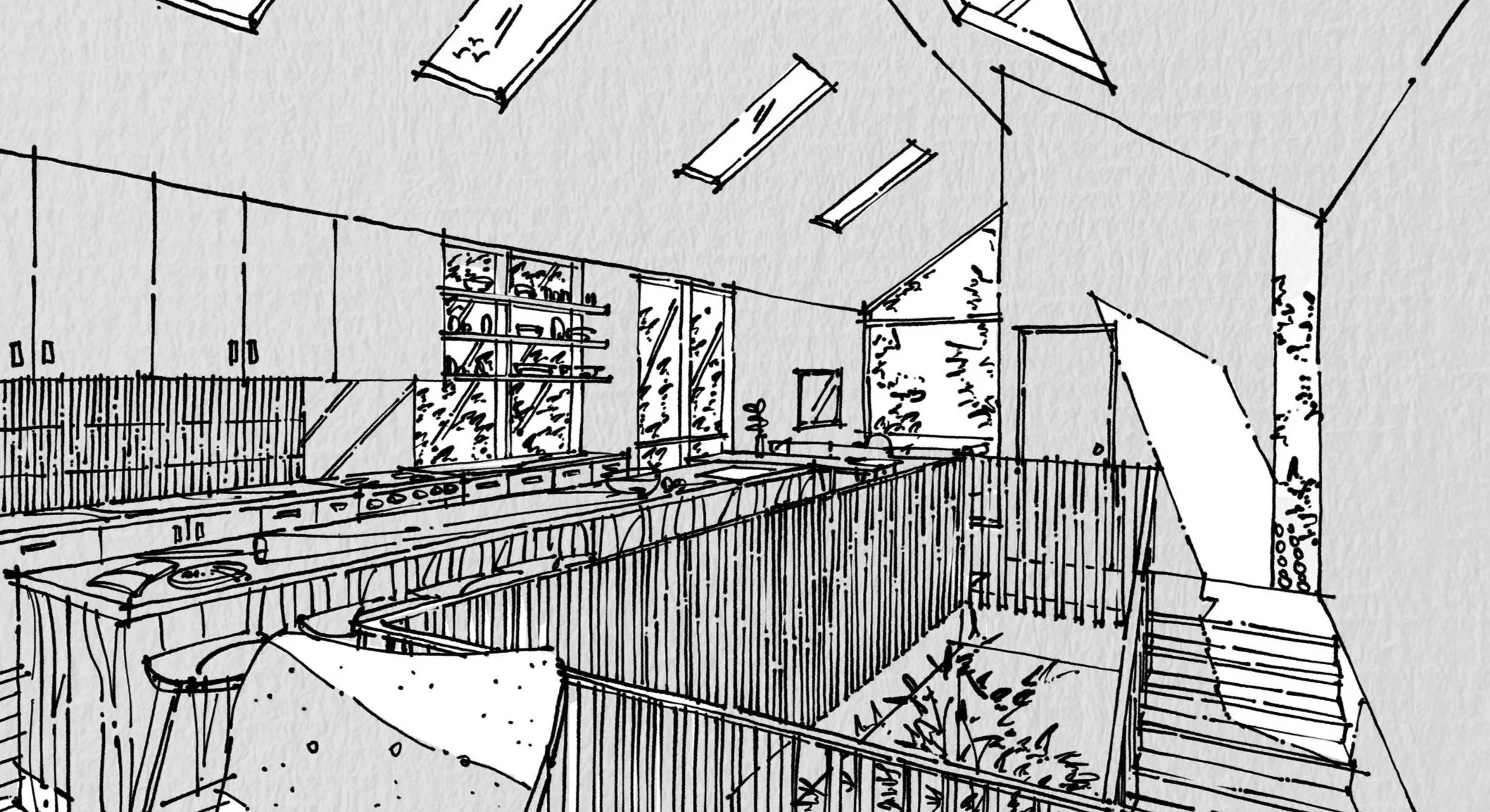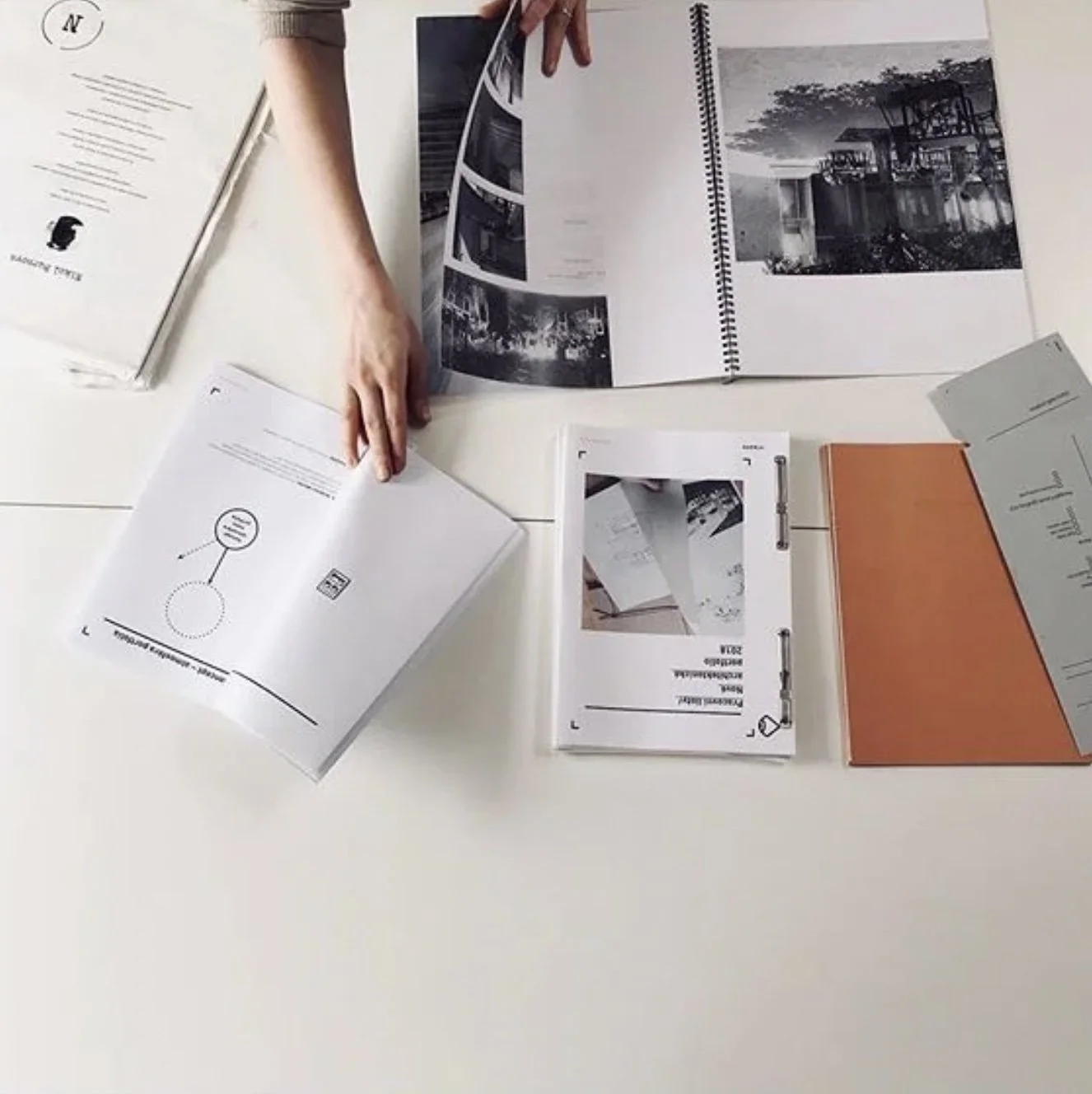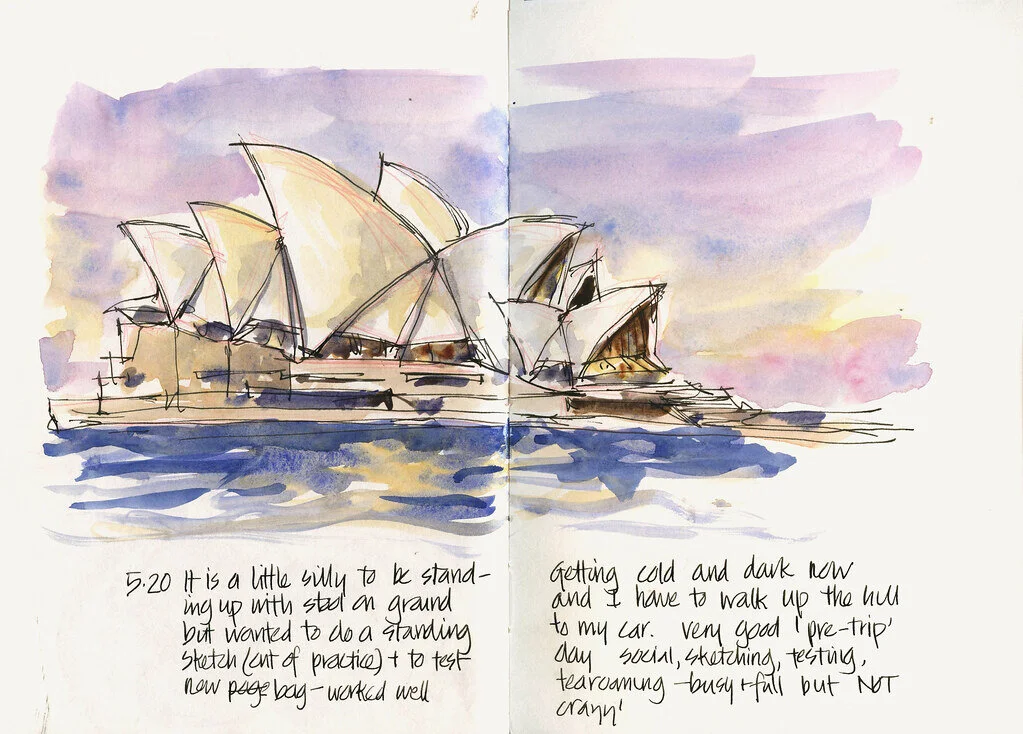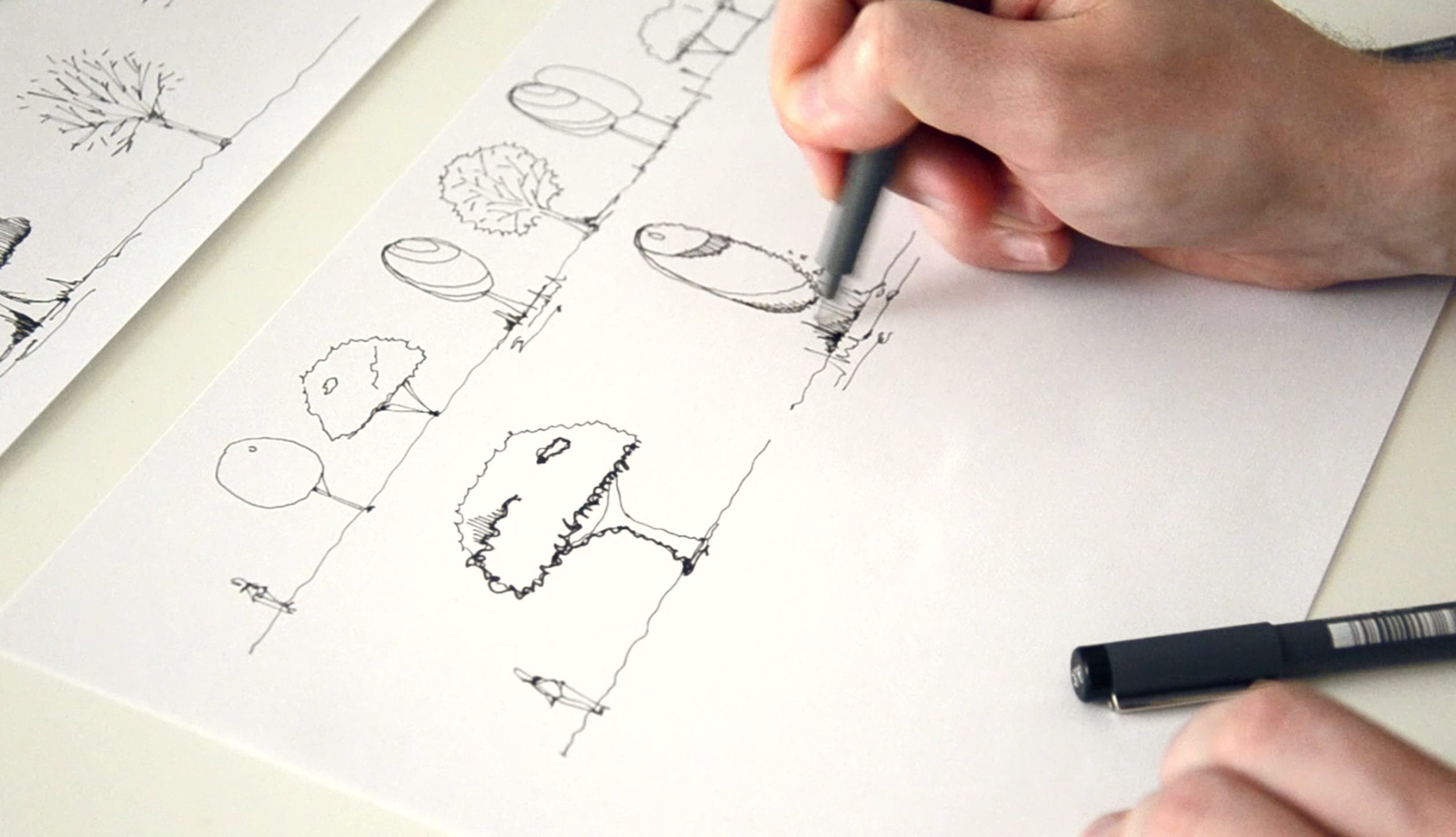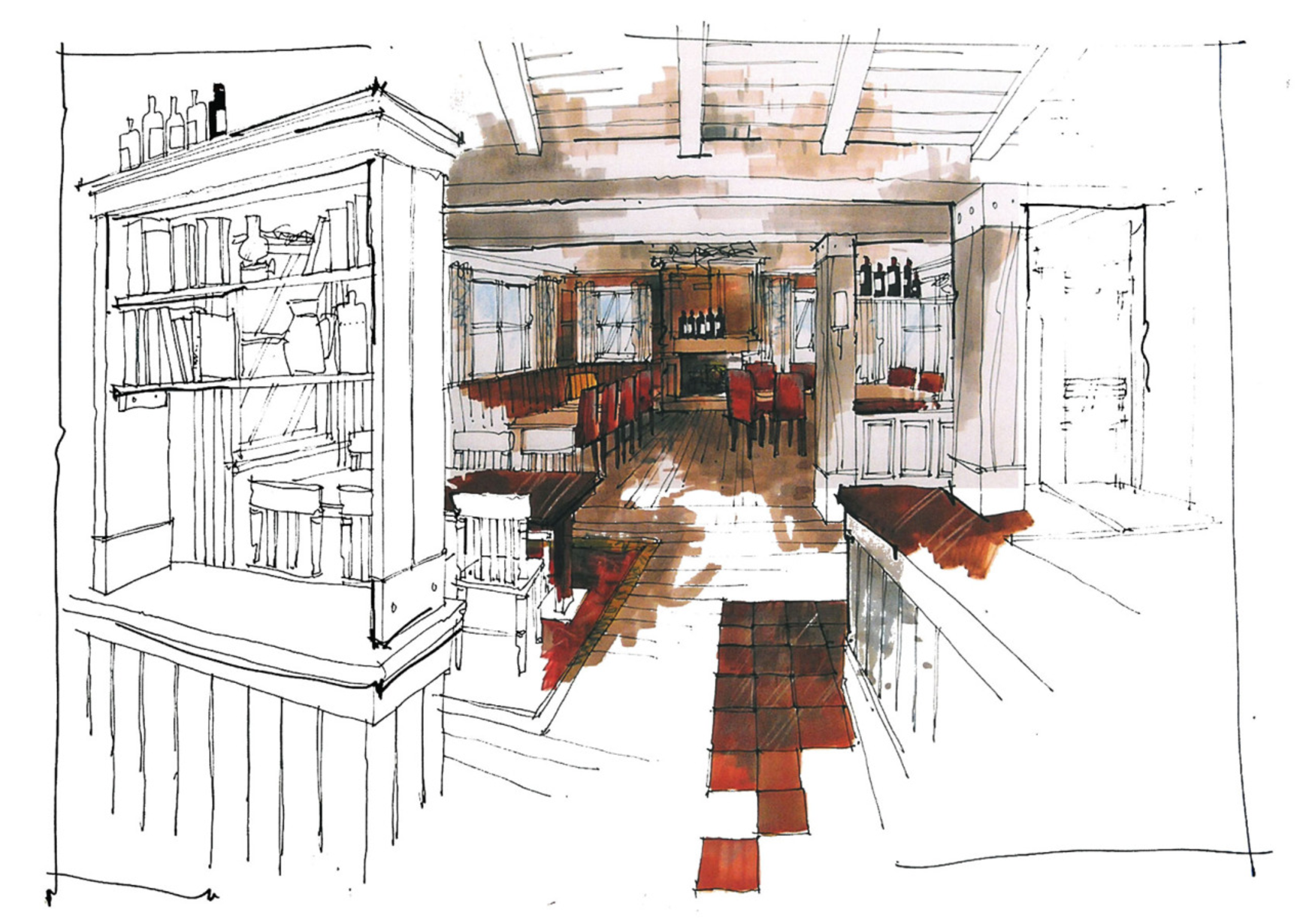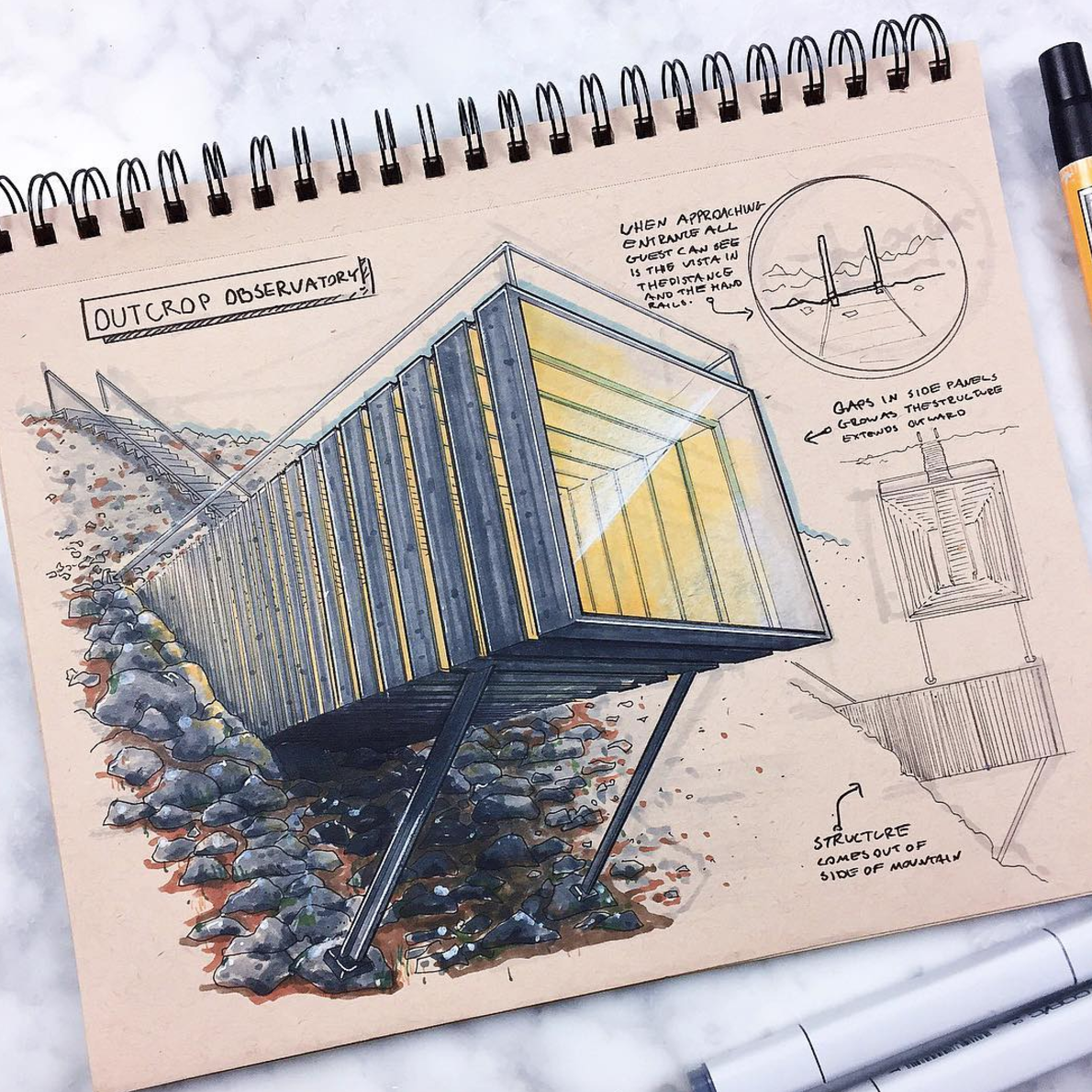Tony on Instagram
Website: www.erinhillsketching.co.nz
1. Olga Sorokina (O. S.): Tony, could you please tell us how did you come to urban sketching and what was your initial step in drawing?
Tony McNeight (T. M.): I had had a career in advertising as an art director (pre computer). I always loved to draw as a child all the way through my life. In 2015 I went travelling around the Greek Islands and at the airport I bought a sketchbook and that is how sketching or travel sketching started. On my return I decided to teach others how to sketch.
“The more I sketch, the more I see”
2. O. S.: Your style is very bold and recognizable: bright colours, freehand lines, no rulers. Could you please tell us about the media you use and how it affects your approach if it does.
(T. M.): I also have painted large canvases with oils and acrylics - but for travel sketching I use a contained set of 12 colours from the Windsor and Newton range.
The great thing about using watercolours when sketching is that it is quick and urgent. Light colours go on first wet on wet and then watch them merge and 'bloom'.
3. O. S.: How do you structure your workday or your workweek?
(T. M.): I work on 4 terms a year. The structure is planning each term with a specific topic for each class including time in the studio and then going out into 'the field' to sketch what we learnt that day - finally winding up with a coffee and some more sketching. I have 8 classes a week so planning is crucial to give my students a topic or a learning they have not covered before.
4. O. S.: Tony, please tell us about your sources of inspiration. What helps you to be inspired and productive?
(T. M.): My continual source of inspiration is my students. Showing them a gift they all have (but didn't know they had, or had been told they were not good enough at art) and watching them grow through the first course and successive courses after that. Plus the more I sketch, the more I see...
5. O. S.: How do you see the future of hand rendering versus digital art? Will hand rendering still be around in 20 years?
(T. M.): There is definitely a 'swing' back in certain quarters to getting off the mouse or Wacom and back to pen/pencil on paper. It is so much more visceral. I have architects coming to me who are good sketchers especially around perspective but are working in CAD all day and miss the tactile approach of pen to paper.
Yes digital is growing in many quarters but that just makes what we do so special and unique and personally more fulfilling as it’s about creating your own style. Every single person has their own different approach and style and the computer cannot replicate this.
“I have architects coming to me who are working in CAD all day and miss the tactile approach of pen to paper, which is so much more visceral.”
6. O. S.: What one advice would you give for beginners in hand rendering and urban sketching?
(T. M.): Simple - don’t fear 'the blank white page', just pick up a pen and start doodling. Set up a page to doodle in the back of your book and just quietly keep working away.
Start with simple objects first - and try not to get caught in the detail. Remember practice makes progress.
Finally come and see me at www.erinhillsketching.co.nz and/ or follow me on Instagram.
Interview with Tony McNeight by Olga Sorokina.
P. S. Please share this inspiring interview with your friends on social media or via email, they will be glad you did. Thanks in advance!
